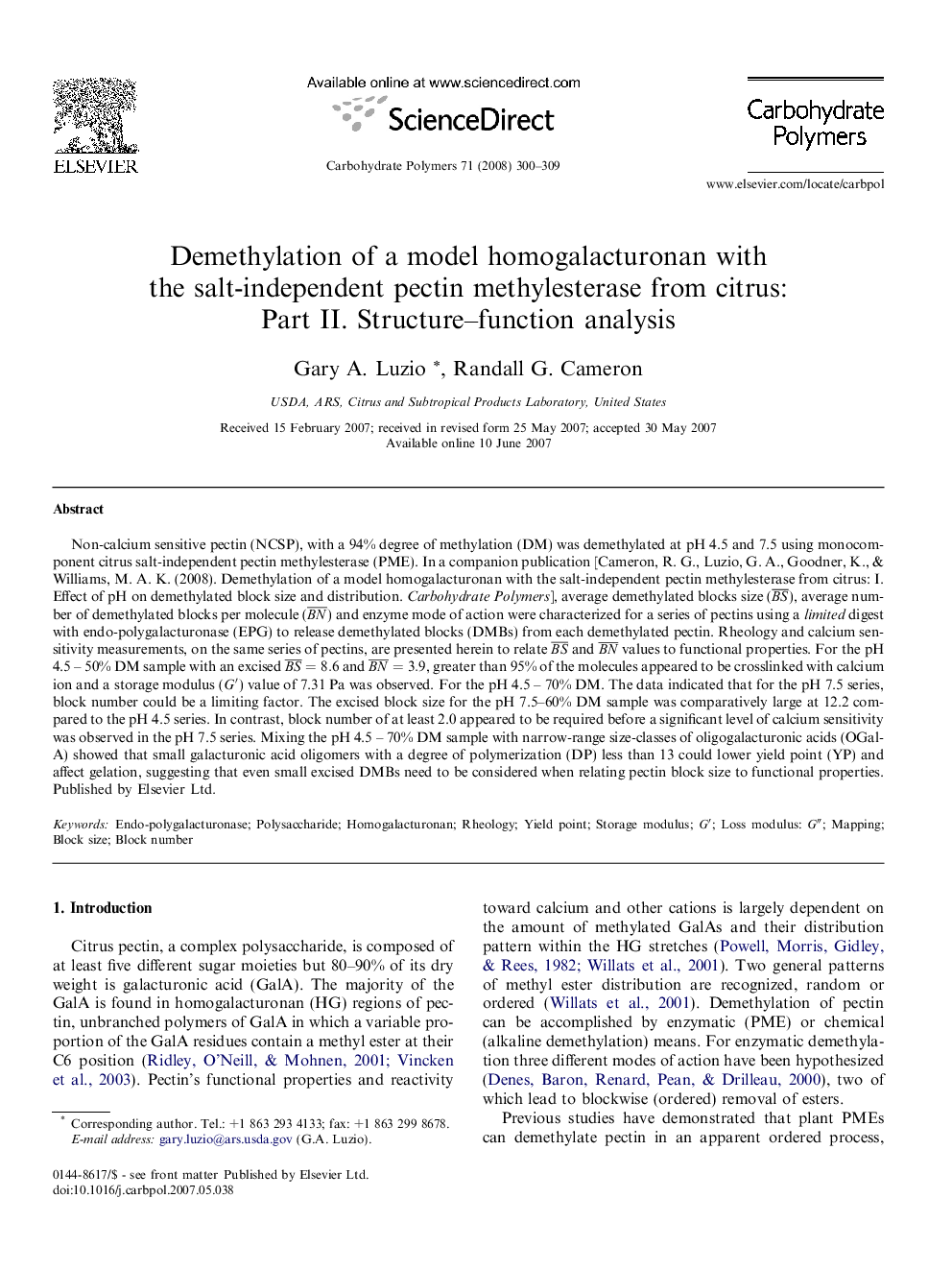| Article ID | Journal | Published Year | Pages | File Type |
|---|---|---|---|---|
| 1379843 | Carbohydrate Polymers | 2008 | 10 Pages |
Non-calcium sensitive pectin (NCSP), with a 94% degree of methylation (DM) was demethylated at pH 4.5 and 7.5 using monocomponent citrus salt-independent pectin methylesterase (PME). In a companion publication [Cameron, R. G., Luzio, G. A., Goodner, K., & Williams, M. A. K. (2008). Demethylation of a model homogalacturonan with the salt-independent pectin methylesterase from citrus: I. Effect of pH on demethylated block size and distribution. Carbohydrate Polymers ], average demethylated blocks size (BS¯), average number of demethylated blocks per molecule (BN¯) and enzyme mode of action were characterized for a series of pectins using a limited digest with endo-polygalacturonase (EPG) to release demethylated blocks (DMBs) from each demethylated pectin. Rheology and calcium sensitivity measurements, on the same series of pectins, are presented herein to relate BS¯ and BN¯ values to functional properties. For the pH 4.5 – 50% DM sample with an excised BS¯=8.6 and BN¯=3.9, greater than 95% of the molecules appeared to be crosslinked with calcium ion and a storage modulus (G′) value of 7.31 Pa was observed. For the pH 4.5 – 70% DM. The data indicated that for the pH 7.5 series, block number could be a limiting factor. The excised block size for the pH 7.5–60% DM sample was comparatively large at 12.2 compared to the pH 4.5 series. In contrast, block number of at least 2.0 appeared to be required before a significant level of calcium sensitivity was observed in the pH 7.5 series. Mixing the pH 4.5 – 70% DM sample with narrow-range size-classes of oligogalacturonic acids (OGalA) showed that small galacturonic acid oligomers with a degree of polymerization (DP) less than 13 could lower yield point (YP) and affect gelation, suggesting that even small excised DMBs need to be considered when relating pectin block size to functional properties.
